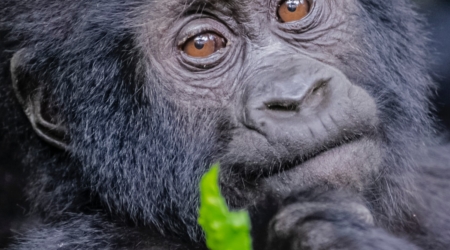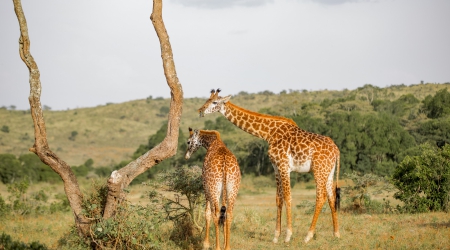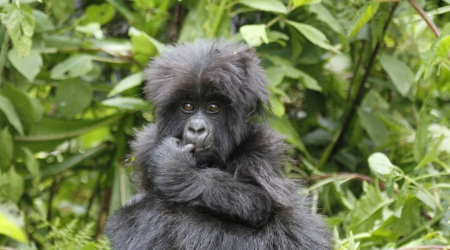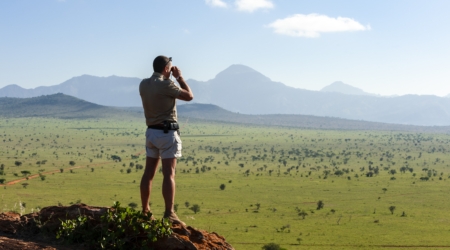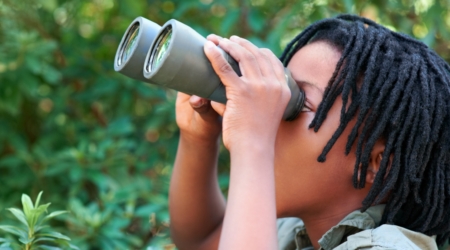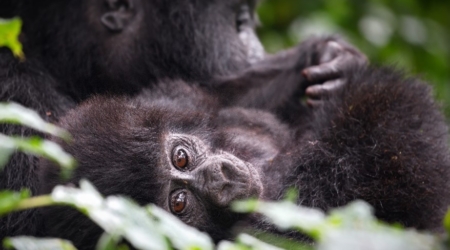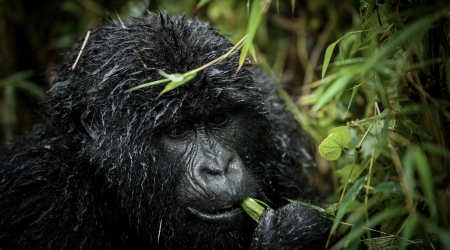Uganda is one of the most ecologically rich countries in East Africa, home to everything from mountain gorillas to rare bird species. But among its lesser-known wonders lies a fascinating and often misunderstood group of animals—snakes.
Despite their importance, snakes tend to provoke fear or suspicion in Uganda and beyond. They also rarely get the attention they deserve in nature-based tourism. Conversation efforts in Uganda often focus on primates, birds, and large mammals, while snakes remain overlooked or misunderstood.
This gap in awareness can lead to unnecessary fear, misidentification, or missed opportunities to understand how these reptiles fit into the broader natural picture.
In reality, most snakes avoid human contact. Some species are shy and hard to spot, while others have adapted to both wild and human-altered environments. Their presence reflects a functioning ecosystem—something nature-based tourism often depends on.
Understanding the presence of snakes isn’t only about avoiding danger. It’s also about seeing the full ecological picture and recognizing how different species interact in shared spaces. For those exploring Uganda’s protected areas or joining nature walks, having a clear sense of what lives on the ground is just as important as what flies or climbs.
Snakes in Uganda aren’t limited to remote forests or rarely accessed reserves. Some thrive close to farms, footpaths, and even lodge perimeters. They aren’t always easy to see, but knowing they’re part of the environment changes how one moves through it. For those who pay attention, snake presence offers subtle but meaningful insights into the health of an area.
Snake Diversity in Uganda
Uganda records over 70 snake species, ranging from small, burrowing types to large, visually striking ones like the African rock python.
Lowland rainforests, such as those in Kibale and Semuliki, support forest-dwelling species that rely on leaf litter, hollow logs, or dense root systems for cover. In contrast, open savannah regions like Queen Elizabeth and Murchison Falls host species more suited to drier ground, exposed sun, and wider hunting ranges.
Some snakes, like the black mamba, move across multiple ecological zones in Uganda and demonstrate high adaptability.
Altitude also plays a role. Fewer species occupy higher-elevation zones like the Rwenzori foothills, where lower temperatures and thinner prey populations create limits.
Meanwhile, wetland areas and river edges, including stretches of the Nile, often support aquatic or semi-aquatic species.
What influences the distribution of snake species in Uganda?
Snake distribution across Uganda depends on several ecological factors. Habitat type, prey density, temperature range, and moisture levels all shape where certain species can survive.
Forest-dwellers tend to need stable humidity and cover, while open-country snakes tolerate more heat and exposure. Altitude narrows down options, often limiting species variety above 2,000 meters.
Human activity also plays a role—agriculture, construction, and deforestation can force snakes to relocate or adapt their behavior. In places where rodent populations are high, snake presence tends to follow. In heavily cleared areas, snake species either move out or shift behavior—becoming more nocturnal, more cautious, or harder to track.
In short, where you find a snake tells you something about that environment’s condition, stability, and resource availability.
Species identification isn’t always easy in the field. Many snakes show color variation depending on age, sex, or local conditions.
A single species might appear grey in one region and olive in another. That’s why wildlife guides, researchers, and field personnel rely more on head shape, scale patterns, and behavior than just color.
Types of Snakes in Uganda
Snake species in Uganda fall into three practical categories based on their interaction with people and medical significance: non-venomous, mildly venomous, and medically important venomous species.
Each category includes a range of behaviors, habitat use, and visibility in the field.
1. Non-Venomous Species
Non-venomous snakes make up a significant portion of the serpents’ population in Uganda. These species pose no direct threat to human life and typically rely on constriction or swift strikes to capture prey like rodents, frogs, and small birds.
a) African Rock Python
These are the largest snakes in Uganda and one of the largest in Africa. Adults regularly grow to 3.5 meters, though specimens over 5 meters have been recorded in riverine zones and swamps.
The python uses strong muscles to constrict prey—usually rodents, birds, or small antelope—before swallowing it whole. It has a thick body, patterned in dark brown and yellowish blotches, making it well-camouflaged along muddy banks or in tall grass.

Despite its size, the African rock python is reclusive.
It prefers low-traffic areas near permanent water sources, especially in national parks and forest reserves. It’s not naturally aggressive toward people, though it will defend itself if surprised.
Field reports show that most sightings happen in the early morning, especially near drying riverbeds where prey activity is concentrated.
b) Brown House Snake
This small, adaptable species often lives near human settlements, especially in agricultural zones and village perimeters.
It’s commonly mistaken for a young venomous snake, though it poses no risk. Adults rarely exceed one meter in length and have a sleek, reddish-brown body with two light stripes running from the nose over the eyes.
The brown house snake hunts at night and feeds primarily on rodents and small lizards.
It’s known for entering storage areas, grain stores, and even thatched roofing in search of food. Its presence usually indicates a nearby rodent population.
It kills prey using quick constriction but avoids confrontation when approached. If disturbed, it may coil tightly and release a musky odor rather than attempt to bite.
c) Eastern Egg-Eating Snake
This species has a highly specialized diet—it feeds only on bird eggs.
It has no teeth and relies on flexible jaws and a sharp spine inside the neck to crack eggshells after swallowing them. Once the egg is broken internally, the snake expels the shell and digests the contents.
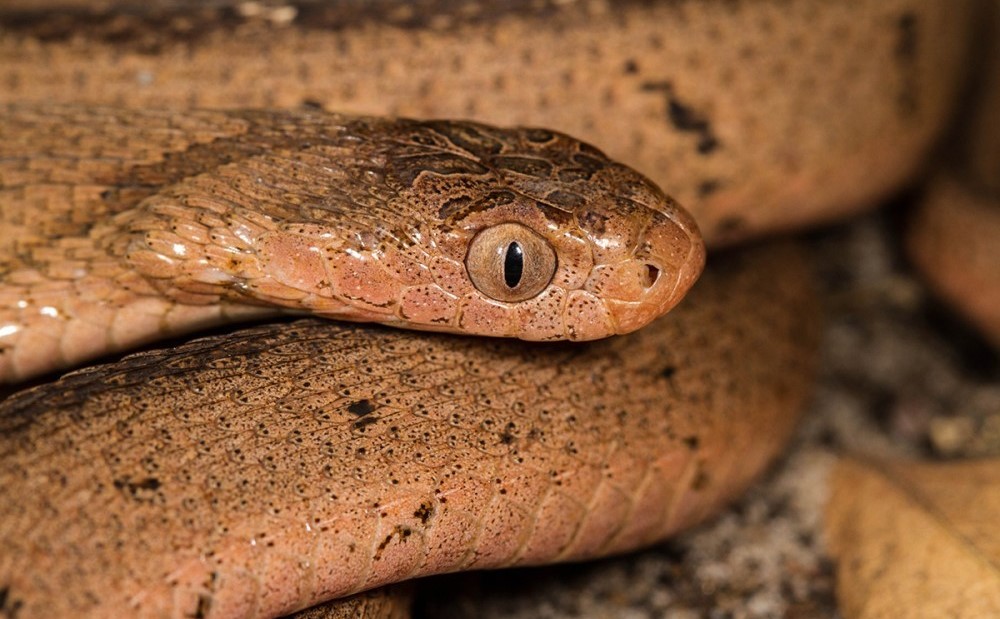
Eastern egg-eaters are slender and light-bodied, often mistaken for vipers because of their defensive behavior.
When threatened, they puff up, hiss loudly, and rub their scales together to produce a rasping sound. This bluff often works, as the sound resembles that of a venomous snake. They’re most active in wooded areas and near bird nesting sites, particularly during the breeding season.
2. Mildly Venomous Species
Mildly venomous snakes possess venom, but it’s usually adapted for subduing small prey—not for defense against large animals.
Their bites may cause localized swelling or irritation but are not medically significant for healthy adults.
a) Common Night Adder
Despite the name, the night adder is not a true adder.
It’s a small, thick-bodied snake that reaches around 60 to 90 centimeters in length. It has a bold, blotched pattern resembling some vipers, which leads to frequent confusion and unnecessary killing.
The night adder is mildly venomous. Its venom targets amphibians—primarily frogs—and isn’t considered dangerous to humans.

A bite may cause pain, swelling, and local inflammation, but severe reactions are rare and usually resolve without antivenom.
This species is active during the early evening and can often be seen near puddles, ditches, or seasonal wetlands. It prefers damp areas where frog populations are dense.
When threatened, it may flatten its body and hiss but rarely strikes unless provoked.
b) Eastern Green Snake
Also called the spotted bush snake, this species is highly agile and often seen climbing shrubs, trees, or lodge walls. It’s thin-bodied, fast-moving, and usually under a meter long. Its coloration—bright green with occasional black speckling—makes it easy to mistake it for a more dangerous species.
The eastern green snake is mildly venomous, but its venom is weak and rarely causes more than minor irritation in humans. It uses its venom to immobilize small lizards and frogs, which form the bulk of its diet.
It prefers wooded areas, gardens, and riverine habitats where cover is dense and prey is plentiful. Despite being harmless to people, its speed and visibility often trigger panic during sightings. It rarely stands its ground, fleeing quickly into foliage or under debris.
3. Venomous and Dangerous Snakes
While most snakes in Uganda are harmless or avoid contact altogether, a small number have venom that can cause serious harm—or, if untreated, death.
These species account for the majority of medically reported snakebites in rural clinics. They vary in behavior: some are reclusive and rarely seen, while others are fast, alert, and more defensive when cornered.
a) Puff Adder
The puff adder is the most dangerous snake in Uganda in terms of bite frequency.
Its widespread presence, excellent camouflage, and habit of lying motionless make accidental encounters common. It prefers open grassland, bushland, and the edges of agricultural fields.
It has a thick body, flattened triangular head, and a pattern of chevrons that blend perfectly into leaf litter or dry grass.
Adults often reach 1 meter, but larger specimens exist. When disturbed, it inflates its body and emits a loud hiss as a warning. If ignored, it strikes quickly and with minimal warning.
Puff adder venom is cytotoxic—it destroys tissue around the bite area and can lead to necrosis if not treated.

Antivenom is effective, but the urgency lies in early intervention. Field guides should know its warning signs and understand that many bites occur when people step on or near the snake without realizing it.
b) Black Mamba
Feared across Africa, the black mamba is rare but extremely dangerous.
It’s not black; the name refers to the inky color inside its mouth. The body is olive-grey, and adults in Uganda can exceed 2.5 meters in length.
It moves with remarkable speed—up to 20 km/h in short bursts—and uses sight to hunt during the day.
Black mambas prefer dry savannah, rocky hillsides, and areas with scattered shrubs. They are highly alert and will usually flee if given space.
When threatened, they raise the front third of their body, spread a narrow hood, and open their mouth as a clear warning.
Its venom is neurotoxic and fast-acting. Without antivenom, bites can lead to respiratory failure within hours.
Fortunately, bites are extremely rare due to the snake’s reclusive habits and tendency to avoid people. Still, in areas where black mambas are known to occur, staff and guides must be trained in first-response protocols.
c) Jameson’s Mamba
Found in forested and semi-forested areas, Jameson’s mamba is lighter and more arboreal than the black mamba. It’s usually green with a slender build, making it hard to detect in canopy-level vegetation or dense vines.
Like its cousin, it has fast-acting neurotoxic venom and can deliver multiple bites if threatened. It’s more agile than aggressive, often escaping into branches or brush when disturbed. Its presence is more common near forest edges and riverbanks, particularly in central and western Uganda.
Though rarely seen on the ground, this species has caused fatal bites in areas where forest and human activity overlap. Quick access to antivenom and trained handling protocols are essential in areas where it’s active.
Read Also: Night Game Drives in Uganda – What Animals to Spot
d) Spitting Cobra
The black-necked spitting cobra is one of the most visible venomous snakes in Uganda, especially near farms, water sources, and rural infrastructure.
It has a wide habitat range and can adapt to semi-urban conditions. Adults range between 1.2 and 2 meters in length.
Its primary defense is spitting venom toward the eyes of a perceived threat. The venom is cytotoxic and causes extreme pain and potential blindness if not washed out immediately.
It raises the front part of the body and hoods like other cobras, often spitting before biting.
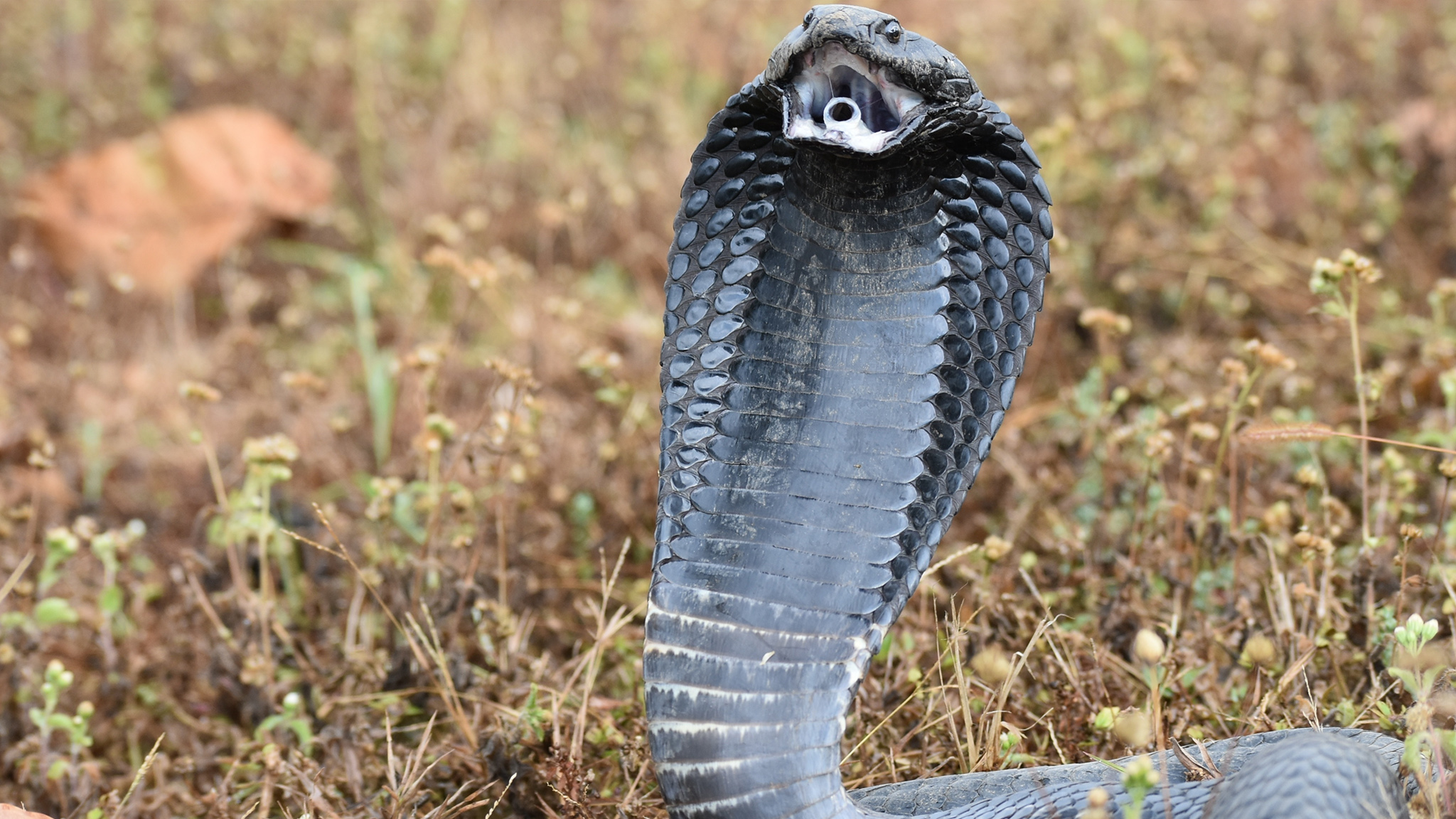
When handled professionally or observed calmly from a distance, it usually retreats. Bites occur mainly when cornered or during attempts to kill or move the snake.
Snakes and Local Communities
In many parts of Uganda, snakes carry symbolic, cultural, and practical meanings shaped by generations of experience.
Attitudes toward snakes differ between regions around Uganda, but fear and mistrust remain common, often rooted in oral history, religion, or personal experience.
In rural communities, snakes are frequently seen as omens. Some people view them as spirits or messengers, while others believe a snake’s appearance signals bad luck or witchcraft.
These beliefs often lead to the immediate killing of any snake encountered, regardless of whether it poses a threat.
At the same time, practical concerns drive local responses. Farmers worry about snakebites while working in fields, especially in sugarcane plantations and maize farms where snake cover is thick.
Children walking to school or people collecting firewood are also at higher risk of unintentional contact. In areas without nearby clinics or antivenom access, a snakebite—even from a mildly venomous species—creates fear.
Human-snake conflict isn’t always visible on formal conservation maps, but it’s a daily reality in many parts of the country. Managing that conflict means bridging science with lived experience—recognizing local knowledge while building trust around safety, ecology, and respect.
Challenges, Conservation and Protection
Snake conservation in Uganda operates quietly compared to efforts around gorillas, elephants, or birds. Yet, these reptiles face threats that deserve just as much attention—especially as habitat fragmentation, urban expansion, and climate pressure increase.
Habitat Loss and Fragmentation
Snakes depend on stable ecosystems to hunt, breed, and thermoregulate. But as Uganda’s population grows, land conversion for agriculture, timber, and settlement has cut into these natural systems. Forest clearance and wetland drainage have pushed many snake species into shrinking pockets of survivable habitat. Those that can’t adapt—especially forest specialists—disappear from altered landscapes.
Road Mortality and Infrastructure Expansion
Tarmac roads, feeder routes, and border zone development have brought a new type of threat: roadkill. Snakes often cross roads during seasonal shifts or after rainfall, moving toward food or shelter.
Most drivers don’t see them—or don’t slow down when they do. The result is steady losses, particularly for slow-moving species like pythons and puff adders.
Intentional Killing and Illegal Trade
Fear still drives many people to kill snakes on sight, but in some areas, the motive is profit. Certain species are hunted for their skins, while others are sold illegally for charms or traditional use.
Pythons are especially at risk. Despite legal protections under the Uganda Wildlife Act, enforcement gaps allow this quiet trade to continue in rural markets and border zones.
Protected Areas as Refuges
Uganda’s national parks and reserves offer relative safety for snake populations. Areas like Kidepo Valley, Murchison Falls, and Semuliki provide continuous habitat with minimal human interference.
In these spaces, ecological cycles are more intact, and snake populations tend to stabilize.
However, protection depends on regular monitoring, ranger presence, and clear policies that include reptiles—not just flagship mammals.
Community Education and Local Leadership
Some progress has come through grassroots education. Herpetologists and conservation NGOs have worked with local leaders to provide accurate, culturally aware information about snakes.
Programs focused on identification, behavior, and safety help shift public opinion. In schools, children are learning that not all snakes are dangerous—and that many help control pests affecting crops.
The Missing Piece: Formal Integration
Snakes are still missing from most mainstream conservation planning. Unlike gorillas or elephants, they rarely appear in tourism marketing, biodiversity audits, or funding proposals.
For long-term protection, snakes must be included in ecological assessments, park management plans, and land-use policy decisions. Without that, they’ll remain on the margins—both ecologically and politically.
Snake Safaris
Snake safaris are a niche but growing segment of wildlife tourism across Africa.
In Uganda, forests and savannah parks support a range of species—from spitting cobras to rock pythons—making it a strong yet underrated destination for reptile-focused walks.
South Africa offers more structured options, often led by trained herpetologists, while countries like Kenya, Tanzania, Namibia, and Botswana are slowly opening up similar opportunities in select regions. These safaris require patience, skilled guides, and an interest in slow, detail-oriented observation—but for those drawn to reptiles, they offer a unique and intellectually rich experience.
Travel Safety Tips
Snakes are part of Uganda’s natural environment, especially in areas close to forests, water sources, and bushland.
While serious snake incidents are rare for visitors on guided tours, it’s important to understand how to reduce risk and respond appropriately if an encounter does happen.
- Watch your step. Most bites happen when someone unknowingly steps near a resting snake.
- Stick with trained guides. They know the local species and how to spot or avoid them.
- Never touch or kill a snake. Defensive bites happen when snakes feel cornered or threatened.
- Use a flashlight at night. Some snakes move after dark. Always scan the ground before walking.
- Wear proper footwear. Closed shoes and long trousers offer basic protection in snake-prone areas.
- Know basic first aid. Keep the limb still, avoid cutting or sucking the wound, and seek help fast.
- Ask about local clinics. Know where the nearest health post is, especially in remote locations.
- Check before sitting outdoors. Look under chairs, under beds, and around shaded lodge areas before settling in.








